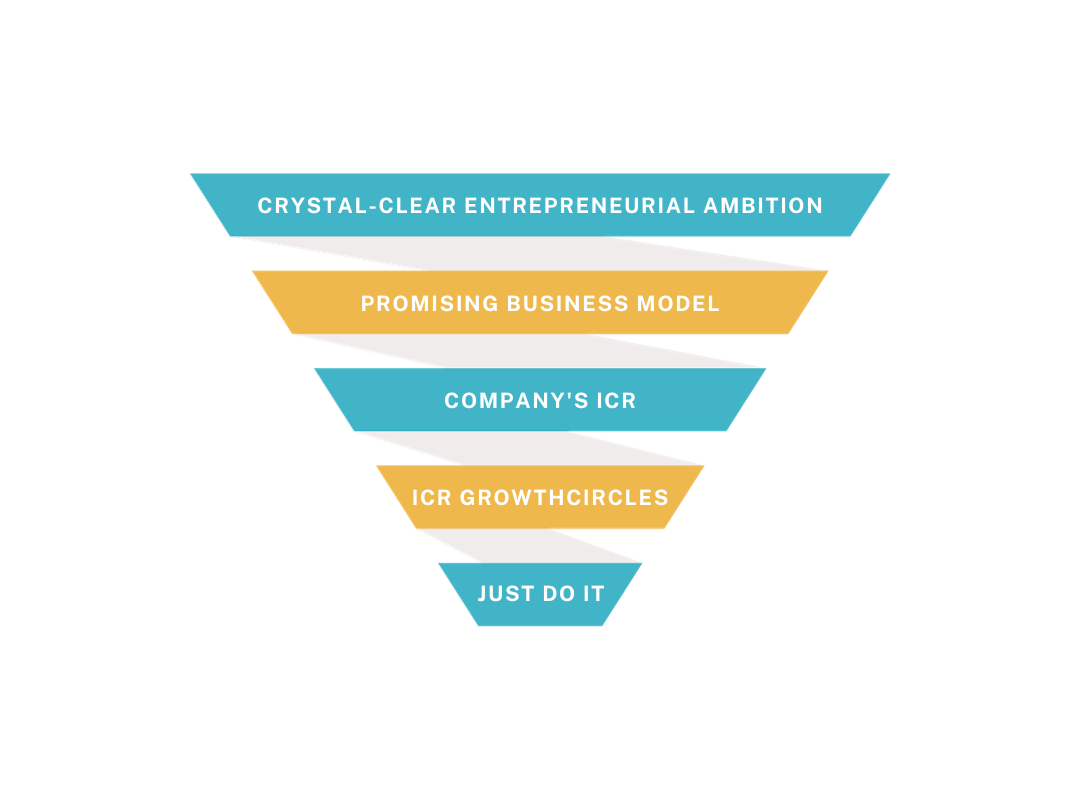
For most small and medium-sized enterprises (SMEs), governance is something far away. In other words, measures of good governance are not yet part of daily practice. Particularly explosive growth and/or external demands, for example from an external financier, have changed this to date. Especially to make the likelihood and impact of risks manageable. Oddly enough, because fundamentally every entrepreneur wants to be successful and certainly not fail. Thus, corporate governance aimed at SMEs is actually relevant for every entrepreneur: it is about having control over realizing entrepreneurial ambition. And there's quite a lot involved. Therefore, we will be paying ample attention to this unexplored area in the world of the entrepreneur in the coming period.
Today, Route ICR shares the tenth article from the series 'How to practically implement SME governance'.
Directing from Entrepreneurial Ambition and a Promising Business Model
Amsterdam, November 17, 2021 - Entrepreneurship is simple. But the hardest thing there is to do simple entrepreneurship. But why is that? Let's talk about that in the coming period. And also look at how this problem can be solved. Today, Route ICR shares the tenth article from the series 'How to practically implement SME governance''.
You are successful if you manage to translate your entrepreneurial ambition into results. Therefore, you need to ensure that you have control over realizing this ambition. This is the ultimate anchor for implementing SME governance in practice. “Because successful entrepreneurship is impossible without clear goals. You give direction to your business operations from your entrepreneurial ambition and a promising business model. It is precisely with this that you also lay the foundation for focus throughout your organization.” [Paul Joore, 2021]
Entrepreneurial Ambition and Value Proposition of Your Business
Your entrepreneurial ambition must be challenging, concrete, and come to life. Five factors typically influence the feasibility of your ambition: knowledge, experience, personal life ambition, personality, and developments in the market & society. Within the value proposition element of the Business Model Canvas, you describe how your company distinguishes itself in the market. In other words, the basis of your company's existence. There is a strong interaction with your company's mission. Therefore, work on a unique distinctive capability that creates value for your (future) customers.
Solving Problems and Pain of Your - Ideal - Customers
You map out how certain products and/or services solve problems and pain for customers. Do the same for how products and/or services benefit the customer. Think carefully about who your ideal customers are and what characteristics they meet. Your ideal customer is the one you prefer to work for. With a clear mission, you immediately distinguish yourself from the competition. This also makes the mission a starting point for translating your company's business model into effective and efficient operations. The ICR shows you where you stand and where you need to improve.
Focus on Interconnection for the Right Focus
Waste of time, energy, and money is mainly due to a lack of focus. Therefore, create clear frameworks within the objective 'This is how we give direction'. And carefully translate this to the other ICR objectives. This way, you maintain the interconnection and ensure focus in the business operations. And this is an ongoing process. Giving direction never stops. Any change in the market or society can influence your plans to realize your entrepreneurial ambition. And you respond to this with targeted adjustments or improvements. That's why we talk about a dynamic business plan that implements SME governance in practice.











